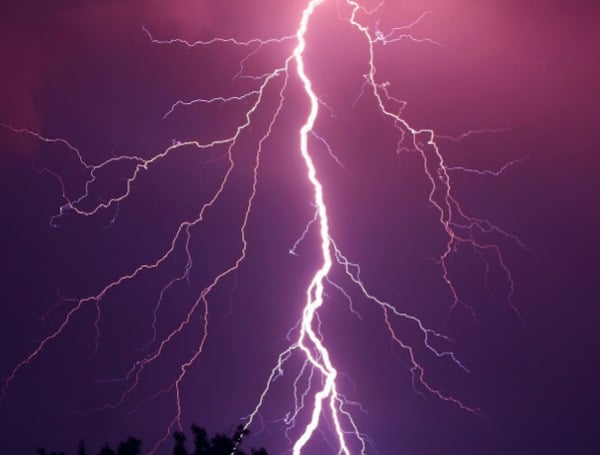As Florida settles into its daily summer thunderstorm routine, residents are reminded of the potent danger lightning poses. With a staggering 50 fatalities from 2015-2024, Florida leads the nation in lightning-related deaths, according to the Lightning Safety Council.
Beyond the personal toll, lightning also inflicted approximately $1.2 billion in damages in 2023, as highlighted in an Ask IFAS document.
In an effort to equip Floridians with safety knowledge, Lara Milligan and Shannon Carnevale, UF/IFAS Extension natural resources agents for Pinellas and Polk counties respectively, recently dedicated an episode of their “Naturally Florida” podcast, titled “All About Lightning,” to this often-misunderstood phenomenon.
READ: NOAA And CSU Forecast Above-Normal 2025 Atlantic Hurricane Season, Urge Preparedness
“We realize that many of our listeners are new to Florida, and as someone that has volunteered with many families who are not from Florida, I think our pop-up storms are a very unique feature these folks may not be familiar with,” Milligan explained.
To address common misconceptions and bolster public safety, Milligan and Carnevale debunked several prevalent lightning myths:
Myth: Once inside, lightning can’t harm me.
Fact: While the risk is significantly lower indoors, you’re never entirely safe. If lightning strikes your home or its power source, electricity can travel through wires, reaching individuals holding plugged-in devices. Therefore, it’s crucial to avoid using such devices during a storm. Additionally, bathing during lightning storms is dangerous as water conducts electricity.
Myth: I’m trying to find shelter anywhere. What about a tree? I’ll be safe because lightning will strike the tree, not me.
Fact: Never seek shelter under a tree. When lightning strikes a tree, the current can travel down the trunk, into its root system, and then spread through the surrounding ground. This “ground current” can electrocute anyone nearby.
Myth: It’s just starting to thunder, or it’s just a little thunder. I’m fine.
Fact: If you hear thunder, you are close enough to be struck by lightning. The adage, “When thunder roars, go indoors,” is a vital safety rule.
READ: Clock Ticks: Florida Death Row Inmate Anthony Floyd Wainwright Fights For Supreme Court Stay
Carnevale emphasizes that the safest place to be during a thunderstorm is inside a sturdy building. If indoors is not an option, a fully enclosed car offers a safe alternative. For those on the water, whether boating or swimming, immediate evacuation and seeking indoor shelter are paramount.
Beyond these myth busts, Carnevale offers essential lightning safety tips for anyone planning outdoor activities:
- Consult reliable weather resources: Before heading out, check a weather app or station for thunderstorm forecasts.
- Adhere to the 30-minute rule: Stay safely indoors until 30 minutes after the last clap of thunder.
- Ensure communication: Have a charged cellphone or radio readily available for communication.
- Inform others of your plans: If venturing into the wilderness, tell someone your general location and estimated return time.
Carnevale summarizes the appropriate perspective on lightning: “I don’t think people need to fear lightning, but I do think a healthy amount of respect for its power is appropriate. Don’t put yourself at risk; have a lightning plan if you are planning to enjoy the outdoors during storm season.”
Please make a small donation to the Tampa Free Press to help sustain independent journalism. Your contribution enables us to continue delivering high-quality, local, and national news coverage.
Connect with us: Follow the Tampa Free Press on Facebook and Twitter for breaking news and updates.
Sign up: Subscribe to our free newsletter for a curated selection of top stories delivered straight to your inbox.

